Introduction

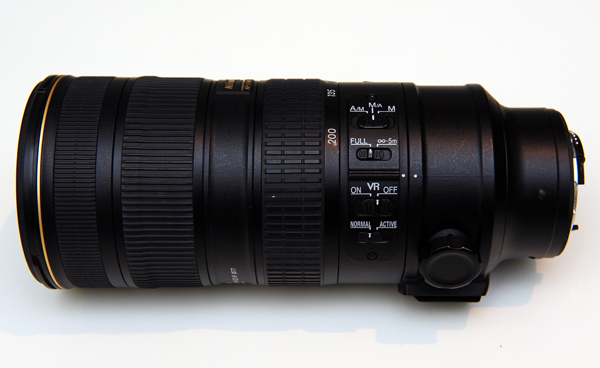

The 70-200mm f/2.8 telephoto lenses have long been a first choice for social events and fashion photographers. The combination of versatile focal lengths, fast aperture, good target isolation, very fast autofocusing and high build quality, are qualities that few lenses can afford to have and absolutely needed for the professional who cannot go through the risk of getting less than acceptable results.
In this review I will describe my own experience, as a pure amateur, with the wonderful Nikkor AF-S 70-200mm f/2.8 G II ED VR, also known as “VR II” (which incidentally has Nikon’s Vibration Reduction implementation version II). Having previously reviewed the also professional level Nikkor AF-S 24-70mm f/2.8 G ED lens of the “holy trinity” of zoom lenses from the current Nikon lineup, I can say that the 70-200mm feels even more rugged, perhaps due to having thicker metal in its construction, and the number of optical elements inside contribute to a lot of weight, 1540 g. By the way, I’ll be reviewing it with the D700 full-frame DSLR, which even if it’s a big camera with a nice round grip, it still benefits a lot with the addition of the battery grip for better balance with the lens for long periods of time. Now here’s how the D700 combines with the 70-200mm, without the battery grip:


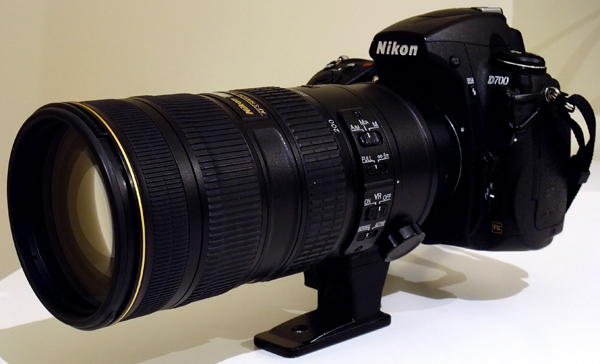
This was a very welcome addition to Nikon’s lineup, especially in the forum communities, since the previous version of the 70-200mm was known for producing high amounts of vignetting and lack of sharpness in the corners, especially at the long end. When this lens was released, the alternatives on the market were the Sigma AF 70-200mm f/2.8 DG EX HSM II and the Tamron SP AF 70-200mm f/2.8 Di LD Macro. These lenses were good, had their own strengths but had a lot of weaknesses too, but of course they cost much less than the Nikkor. The Sigma was a fast focusing lens but had problems with chromatic aberrations and obvious lack of sharpness at the long end; the Tamron was the opposite, having great optical qualities but a very weak AF motor which was far from great for action, although it was known to be great for portraiture and could do very good closeups. But the best option was to opt for a used “VR I”, or even Nikon’s old AF-S 80-200mm f/2.8 D. Nowadays, the third-party makers put a lot of effort in their designs and the Sigma released a new version with OS (Optical Stabilization) and many improvements that contribute to better results, especially at the long end; Tamron, on another hand, produced an excellent lens with VC (Vibration Compensation) and USD (Ultra-Sonic Drive) motor. Both lenses finally seem to be good alternatives to the Nikkor.
The Nikkor AF-S 70-200mm f/2.8 G II ED VR is a complex design with no less than 7 ED elements to correct optical aberrations, and 1 Nano Crystal Coat to deal with flare and ghosting. The lens front element doesn’t rotate while focusing, so using a polarizer filter is not a problem. Typical for these kind of lenses, zooming is internal and therefore the length of the lens remains constant through the entire range. As said before, this lens introduces Vibration Reduction version II which is 4-stop effective, according to Nikon. The VR has two working modes – Normal and Active – Normal mode is best for static subjects and compensates for small low frequency movements, and Active mode is best for action where the lens tries to correct high frequency shakings in addition.
At about 1899€ today, this is a very expensive lens and still everybody have been raving about it. We’ll try to find out why.
Technical Specifications
| Focal length | 70 – 200mm |
| Maximum aperture | f/2.8 |
| Minimum aperture | f/22 |
| Field of vision | 34 – 12 degrees (on FX) |
| Weight | 1540 g |
| Dimensions | 206 x 87mm |
| Optical construction | 21 elements in 16 groups (7 ED elements, 1 Nano Crystal Coat element) |
| Aperture blades | 9 |
| Filter diameter | 77mm |
| Minimal focus distance | 140cm (104cm from the front element) |
| Hood | HB-48, petal-shaped |
| Mount | Nikon F |
Mechanical Characteristics
| Zoom ring | Metal with rubber finish |
| Focus ring | Metal with rubber finish, no infinity stop |
| Focus throw | ? degrees |
| Focus motor | Silent Wave Motor, allows full-time manual focus override |
| Optical stabilizer | Vibration Reduction (version II), up to 4 stops capability |
| Front element rotation while zooming | No |
| Front element rotation while focusing | No |
| Internal focusing | Yes |
| Lens extension while focusing | No |
| Lens extension while zooming | No |
Handling
The Nikkor is a chunky piece of metal and it’s front-heavy with the D700, which is a heavy camera by itself, but balance can be restored by adding a battery grip, and shooting with this lens result in being very pleasant that way – I got only a bit of back pain after shooting and carrying the combo for about 8 hours at the races (the longest I shot with it so far). The zoom ring is thin and lightweight, isn’t damped and feels like rubbing metal against metal, but turns around very fast which is excellent for action photography where framing and getting the shot at the right moment is crucial. The focus ring feels a little heavier but allows for quick adjustments on-the-fly, since the lens supports manual focus override after auto-focusing. Speaking about focusing, the lens employs two different modes which are selectable via a switch on the side of the lens barrel – A/M and M/A. These namings may sound weird at first, and still sound strange after – A/M is a new mode that takes longer to recognize that the lens entered manual focus override mode (it takes a little more focus ring turning around by the user), which is useful for protection from accidental hits on the focus ring; M/A, in its turn, is the conventional auto-focus mode with manual override (it instantly enters manual mode at the slightest hit on the focus ring). The lens has a focus limiter for 5 meters which is nice to have when shooting outdoors for even faster AF. Speaking about speed, this lens is even faster focusing than the Nikkor AF-S 24-70mm f/2.8 G ED, especially indoors in low light, and is also the most accurate of all lenses I have used until today. As long there exist the slightest contrast to grab on, the lens nails it, and low light AF performance is really impressive. According to other tests, this is probably the most eye-catching characteristic compared to the other current third-party offers. Another eye-catching characteristic, but on the negative side, is the well known focus “breathing” when shooting close distance objects, which result in less-than-expected magnification. This can be disappointing, for instance, to the wedding photographer who needs to take that close shot of the wedding rings and other small details. Personally I prefer to use a macro lens for that kind of work, since probably the magnification without the “breathing” issue would not be acceptable anyway.
The lens includes a non-removable collar and a removable tripod foot adaptor. The collar can be turned around with ease after loosening the knob, and the tripod foot can be removed also from loosening its knob and sliding it out. The tripod foot is all metal and doesn’t flex. The Nikkor has a short petal-shaped hood which protects the lens but not so much from the Sun rays and should be more effective.
Resolution
For the resolution test I shot the 5 Euro bill in the studio. Focus was achieved using Live View to avoid auto-focus imprecisions and to compensate for an hypothetical field curvature. They are followed by a long distance test shot of a target placed at around 100 meters.
The first column shows a crop of the image center, the corner crop is on the second column and the third column shows a crop of the extreme corner. Each row represents an aperture setting, from maximum to f/22 in full stops. Here are the results:
70mm

At 70mm the center resolution is already excellent right from f/2.8 and only deteriorates at f/16 due to diffraction, and the DX corner resolution follows the same behavior. The FX corners are much less sharp at f/2.8 but reach very good levels already at f/4, and by f/5.6 they reach excellent levels.

At long distances, the results are much better and reach already excellent levels at f/2.8 in the FX corners. Stopping down does nothing to improve resolution and only clears the vignetting.
The lens is excellent at 70mm, especially at medium to long distance shots where every bit of the images reach impressive resolution levels.
105mm

Just like at 70mm, by 105mm the resolution at the center and DX corners is excellent already wide-open and only drops a little at f/16. But now the FX corners are already very good wide-open at reach excellent figures by f/4.

There’s really nothing to say here in this test. The lens performs brilliantly at 105mm like in the previous test.
This is probably the lens sweetest spot, but let’s see what happens at 200mm below.
200mm

Surprisingly, where this is typically the weakest spot of all 70-200mm lenses, here at 200mm and on the short distance test the FX corner sharpness is even closer to the center level than on the previous test, and reach top quality levels. The FX corner is only a hair less sharp and is affected by some vignetting, but nonetheless this is an impressive performance. The resolution figures only lose a bit of “bite” by f/22.

The results from the long distance test reflect those at short distance – the FX corner is only marginally less sharp at f/2.8 and there’s some vignetting as well.
I didn’t expect this level of performance from a 70-200mm f/2.8. Usually the FX corners lack a bit of sharpness, have vignetting, and have a weak spot at 200mm where normally only the center portion of the frame is on a good level. This is not a problem most of the time because the subjects tend to be centered in the frame. But the Nikkor performs so well that it is now clear why it’s often compared with primes by users in forum communities. I may go a step further and say that few primes perform as good as this zoom lens, unless you’re comparing it to a 1899€ prime lens (but you’d lose the versatility of the zoom).
Distortion
For the distortion test I shot a brick wall, again:
70mm

105mm

200mm

The lens produces a bit of barrel distortion at 70mm which is negligible in real-world photos, and changes to pincushion at 105mm but also on a small amount and hardly visible. At 200mm the pincushion distortion level increases but now by much.
Vignetting
In this test I shot a white wall at home using tungsten white balance and setting exposure manually.
70mm
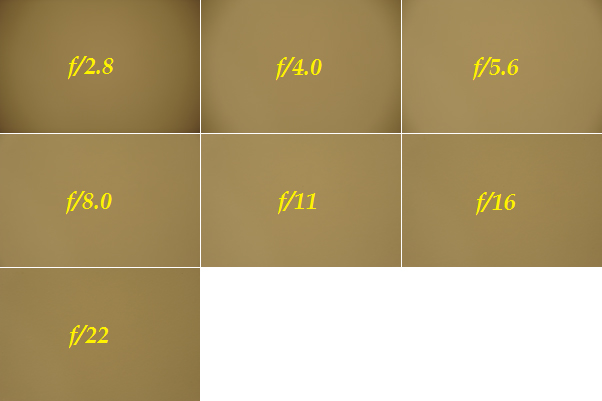
At 70mm, vignetting is very strong wide-open and much less so at f/4, before disappearing at f/5.6.
105mm
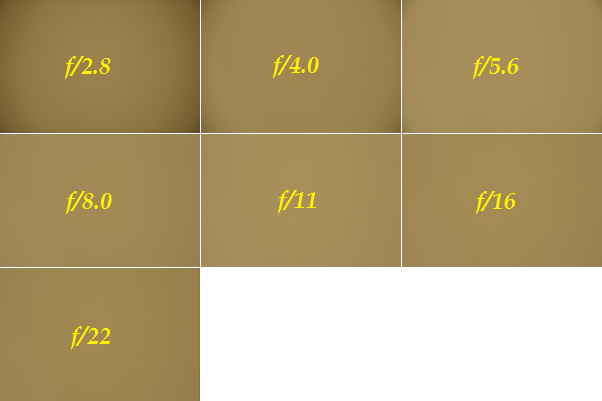
At 105mm, vignetting is strong at f/2.8 and decreases a lot at f/4. At f/5.6 it’s non existent.
200mm

At 200mm, vignetting reaches the weakest spot and is at a very strong level by f/2.8 which darkens the entire frame. At f/4 it’s still very strong but affects only the corners, and by f/5.6 it decreases a lot and practically disappears at f/8.
Chromatic aberrations
For this test I shot a car roof from above, on a very sunny day early in the afternoon.
70mm

200mm
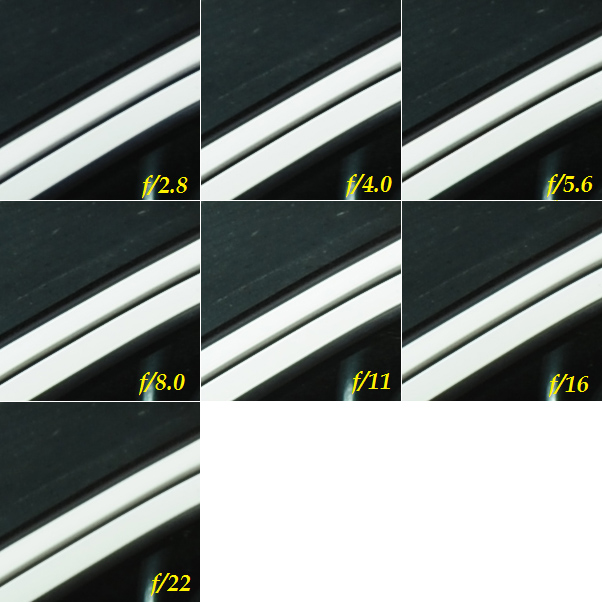
The Nikkor employs no less than 7 ED (Extra-low Dispersion) elements to reduce chromatic aberrations and the lens performs remarkably in this department. Aberrations are negligible at all apertures on every tests I did, including the always challenging shot of foliage against the sun. This is an excellent performance for any fast zoom lens.
Coma
Coma is an important requirement in astrophotography and usually affects the corners of most lenses. Lenses that are affected by coma produce comas (hence the name) instead of bright light points in dark backgrounds. One way to test coma is using a LED source of light at home in a dark room.
I put the light source at the center (first column), corner and extreme corner of the frame (second and third columns, respectively), at maximum aperture and stopped down.
70mm
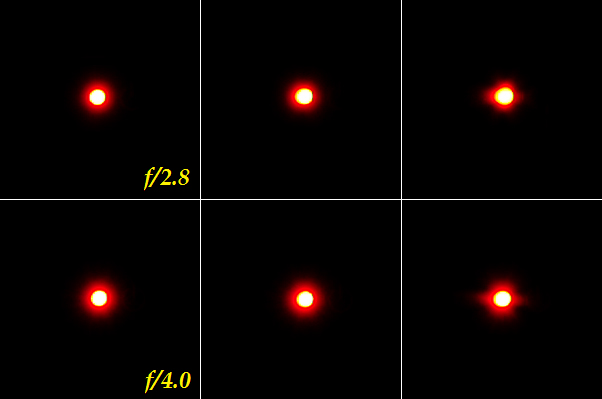
200mm

Like most telephoto zooms, the Nikkor isn’t much affected by coma and the only distortions visible are in the halos around the center, where they stretch the more the points are closed to the borders, but the points themselves remain perfectly circular. Curiously, those halos seem to stretch a little more at f/4 than at f/2.8 on the FX corner.
Flare
In this test I shot the top of a small building against the sun, to see if I could get any flare vestiges. I started shooting directly against the sun, then placed the sun at the corner and finally made a shot with the sun just outside the frame.
 |
| Shot directly against the sun. |
 |
| Shot with the sun placed at one corner of the frame. |
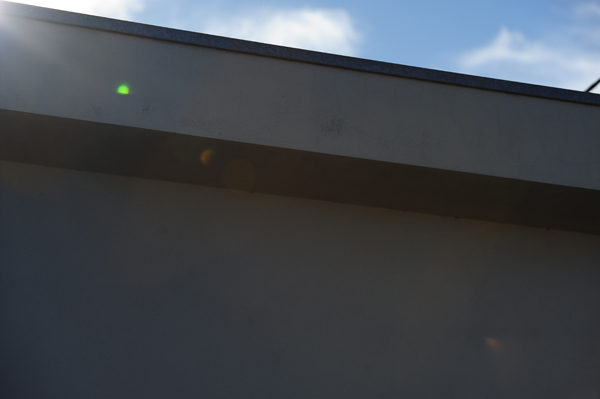 |
| Shot with the sun just outside the frame. |
Typical for any telephoto zoom lens, the Nikkor is affected by flare in every situation with the sun nearby. Despite having one Nano Crystal Coat element to reduce flare and ghosting, flare affects negatively the images when the sun is at the center of the frame, reducing the overall contrast. When the sun is at one corner, the multiple internal reflections of the sun rays are clearly visible towards the opposite corner, and the overall contrast of the image is still affected badly. Finally, when the sun is just outside the frame, the overall contrast returns to normal levels but there’s still few internal reflections visible in photos.
Notice that this test was made without the supplied hood, but even with the hood there’s still few reflections visible in pictures but the overall contrast certainly benefits with its use. Perhaps performance with the hood on could be better if it were a bit longer, just like the one of the “VR I” version lens.
Bokeh
Thanks to the 9 aperture blades, we can expect circular out of focus highlights from this lens. I took a defocused picture at the widest aperture of the city lights and got crops of the center, corner and extreme corners. The test was repeated for the subsequent two stops.
70mm

200mm

Bokeh from this lens is perfectly circular at the center and suffers from the cats eye distortion in the extreme corners, and the out of focus highlights are a bit nervous on the inside at 70mm but get perfectly smooth at 200mm, at f/2.8. By f/4, we start to see some polygonization which is more visible at 200mm, but still the edges aren’t accentuated and produce smooth transitions and backgrounds that are soft and not distracting at the longest focal length. This characteristic doesn’t change much at f/5.6.
All in all, the lens has superb bokeh characteristics (for a zoom lens) which are surely amongst the best in class.
Macro/Close-up
The Nikkor was capable to focus as close as 140 centimeters from the sensor plane, or 104 centimeters from the front element. I shot an 1 Euro coin and this is what to expect at the minimum focus distance:
70mm

200mm

This shows clearly that the lens maximum magnification is too small for closeup work, due to the well known issue of focus “breathing” in this very lens.
Image stabilization
This lens introduced Nikon’s new version of VR (Vibration Reduction), which is advertised as giving an advantage of 4 stops. This means that at 200mm, one can shoot at speeds as slow as 1/13 seconds.
To test it, I shot the back of a street lamp from my window. The first column shows crops of the subject shot with VR off, and the second column shows them with VR on for comparison. Here are the results at 200mm starting at 1/200 s:

The results shows clearly that the VR II works as advertised and better, resulting in sharp images at 1/13 seconds with ease, and adding a battery grip I managed to shoot sharp pictures at 1/6 seconds, benefiting with the improved balance, though the percentage of keepers suddenly decreased. Of course, one has to build some technique to hold the camera and lens steady, so that the benefits of this technology can be applied. The image taken at 1/6 s is softer but that’s the result of shooting at f/20 which is greatly affected with diffraction. Surely VR version II works as advertised, and this versatility is amazing as long as your subject remains perfectly static.
Summary
| Build quality | 10 | Built like a tank with tight precision |
| Handling | 10 | It’s obviously heavy but has perfect ring placement, and AF is extremely fast and accurate in every situation even in sports and very low light, catching the least amount of contrast to lock on |
| Resolution | 9 | Almost perfect, the only drawback is not so good FX corners wide-open at 70mm |
| Distortion | 9 | Very small amounts of barrel distortion at the wide end and pincushion thereafter, but not noticeable in most pictures |
| Vignetting | 8 | Very strong at widest apertures especially at 200mm |
| Chromatic aberrations | 10 | Never encountered issues, even on most challenging situations |
| Coma | 9 | Halos can be found on FX corners but they don’t affect negatively applications like astrophotography |
| Flare | 3 | Very weak resistance against flare and ghosting, the supplied hood isn’t very effective and should be longer |
| Bokeh | 8 | Very smooth at widest apertures, but gets polygonal early by stopping down |
| Overall | 84% | A fantastic lens and a truly reliable workhorse that delivers beautiful results, and the only disappointing features are weak flare resistance and the focus breathing issue |
Samples
Here are some samples of pictures I made with this lens. Settings: simple RAW convertion with Nikon View NX2 at default settings (unless noticed), picture control set in-camera to Landscape mode, no post-processing applied except reducing to 600 pixel width.
 |
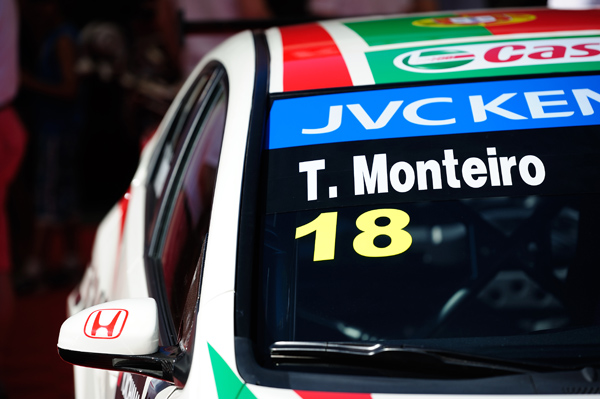 |
 |
 |
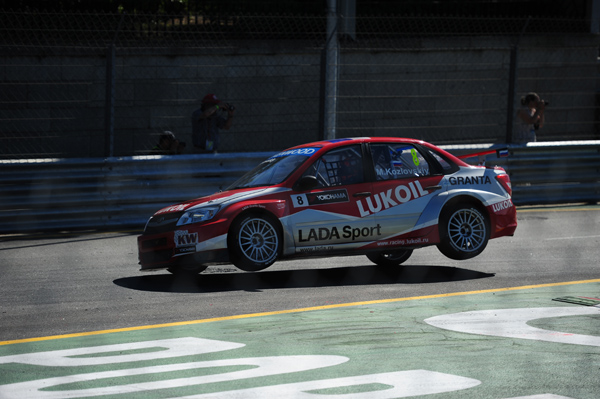 |
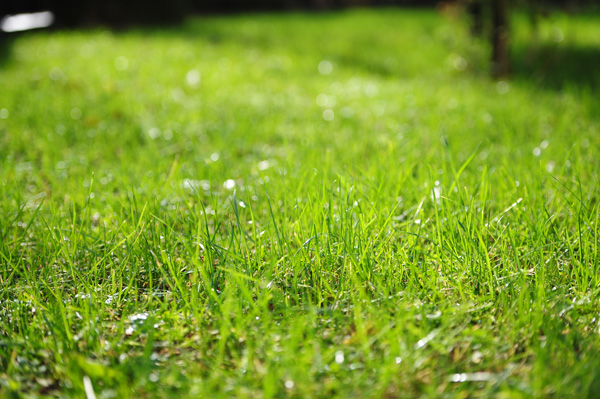 |
Hi Jose, great review, well written with all the things you need for an informed decision. In fact, I was about to buy the Nikon 24-70mm f2.8 but ended up with the 70-200mm f2.8 II which in its kind is the much better lens. So for the moment I enjoy the great performance of the 70-200mm, working with my primes in the normal range (28mm f2.8 AI-S, 50mm and 85 mm f1.8 AF-S). The reviewed Nikon is overall maybe the best lense I ever used. Do you think there will be a review from you on the Nikon 14-24mm f2.8 soon? Kind regards and keep on! Mark